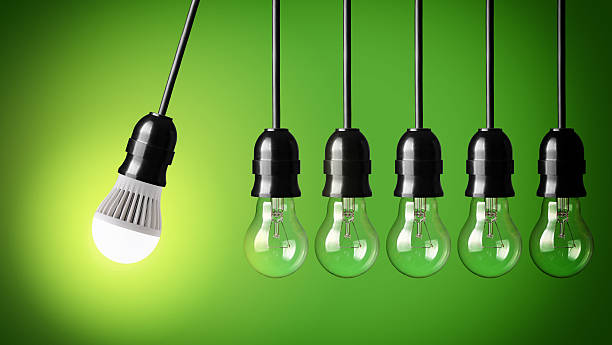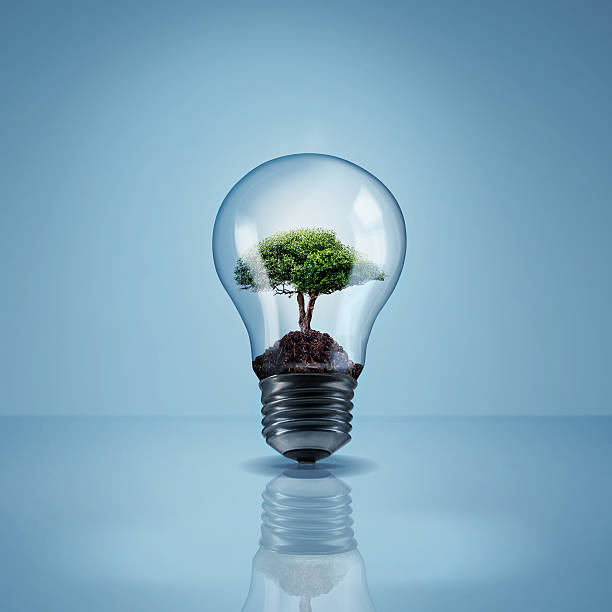How Does “Green Lighting” Affect and Promote the LED Lighting Industry?
1. What is “green lighting”?
“Green lighting” was first proposed by the US Environmental Protection Agency (EPA) in 1991 to “launch the green lighting project” concept, and then immediately received the support of the United Nations and the attention of many countries, which led to the beginning of the LED lighting competition.
Actively promoting the implementation of green lighting goals and engineering projects from the aspects of policy and technology is the main means for the country to promote the use of established goals.
In 2003, the British government encouraged the public to use LED lighting through the “Energy White Paper”, and local lighting companies also actively participated in the research and development and production of LED lighting products.
From 2000 to 2006, Europe launched the “Green Lighting Program”, which eliminated high-energy-consuming products. The EU banned the use of high-wattage incandescent light bulbs from September 2009, and completely banned incandescent light bulbs in 2012.
As early as 1997, the United States achieved energy savings of 7 billion kWh through green lighting projects, which were later incorporated into the “Energy Star” building energy efficiency program in 1998.

2. “Green Lighting” in the Background of the Macro Era
Then from a macro perspective, there are four reasons for the introduction of “green lighting”:
(1) The continuous growth of population leads to the continuous increase of primary energy consumption.
(2) Due to the different economic development of various countries, different energy consumption growth patterns have been created. Developed countries have entered a post-industrial society and their economy has developed into an industrial structure with low energy consumption and high output. The growth rate of energy consumption is significantly lower than that of developing countries.
(3) The regional energy consumption structure has obvious differences.
(4) The uncontrollability of the epidemic and political reasons increases the pressure on energy trade and transportation.
At the same time, the global climate change is becoming more and more serious, and the natural disasters caused by the climate are becoming more and more severe, and the people’s awareness of environmental protection is also increasing day by day.
As a result, a diversified, clean, efficient, globalized and market-oriented “green economy” has become a breakthrough to break the energy predicament.

3. The technical impact of “green lighting”
Policies correct the direction of the industry, and technology promotes the development of the industry.
The rise of IOT and 5G networks has driven LED lighting to the digital technology field of cross-industry integration.
The wide application of sensors and the cloudification of big data make intelligent systems become the development focus of downstream enterprises in recent years.
In the digital age, the application of 5G network and sensors can analyze user information, product usage environment, and user behavior. By setting up intelligent systems, lighting is more efficient and humanized, and unnecessary energy consumption is also saved. .
In addition, the government’s vigorous promotion of smart cities and smart engineering projects will increase the market demand for smart lighting.
In 2017, the global smart lighting market entered a stage of rapid development, with a market size of nearly 4.6 billion US dollars. The LedsMaster Group Consulting estimates that the global smart lighting market size in 2022 will be 8.19 billion US dollars.

4. The impact of “green lighting” on application scenarios
(1) Smart lighting
With the acceleration of urbanization, the demand and construction scale of urban public lighting facilities are increasing year by year, and the energy consumption of urban public lighting is also increasing.
In the era of sustainable energy development, energy saving and emission reduction, efficient lighting, improving the life of street lights and other outdoor lighting, and reducing maintenance and management costs are also the main needs of urban intelligence.
For example, in terms of traffic lighting, the smart lighting system can adjust the brightness of the street lights according to the real-time traffic flow and the driving direction of the vehicles as long as there are vehicles on the road under video surveillance, and can freely group and control the street lights. After testing, the power saving rate can reach 80.5%. .
(2) Plant lighting
With the continuous deterioration of the earth’s living environment, and energy saving and emission reduction in agriculture, the plant lighting that simulates sunlight has shown explosive growth in recent years, and the industry’s attention has gradually increased.
Although the main driving factor is the rapid growth of the North American medical and recreational cannabis market, in the long run, LED lighting applications in vegetables, medicinal materials and other fields have much more application space than cannabis.
According to the latest research data from LedsMaster Group Consulting, the global LED plant lighting market will grow by 10.4% to US$1.85 billion in 2022.
In the first half of last year, the development of the plant lighting market slowed down, mainly due to the delay in shipping and the increase in freight prices affected by the epidemic, followed by the shortage of power ICs and other political factors.

5. “Green Lighting” Promotes Industrial Structure Adjustment
After the government funds entered, a large number of enterprises poured into the LED industry successively. After the subsidy retreated, it entered a new round of reshuffle in 2011.
According to statistics, in 2011, 10% to 20% of LED-related enterprises in the country have closed down, of which the Pearl River Delta accounts for the vast majority.
Since the second half of 2011, nearly 20 heavyweight mergers and acquisitions have occurred in the global LED industry, including the Chinese market.
Some companies with strong capital and clear long-term goals, such as GE, Osram, LayTec AG of Germany, and Endo Lighting of Japan, have begun to acquire, especially some international lighting manufacturers including Osram, Philips, etc. A series of mergers and acquisitions have made more layouts.
By 2012, the distribution of enterprises was highly concentrated, with the Pearl River Delta accounting for nearly 90%.
In 2020, the industrial structure after the epidemic has been adjusted. For example, in the upstream of the LED industry, ingot manufacturers, sapphire flat wafer manufacturers and PSS manufacturers occupy the dominant positions in their respective links.
6. The promotion of “green lighting” to market size
The LED lighting industry is developing rapidly. From the chip side, the output of GaN wafers in mainland China was 2.8256 million pieces in 2019.
It is worth noting that the epidemic has not affected GaN Wafer companies, and even the output will directly increase by more than 10 times by 2020, rising sharply to 29.12 million pieces, and to 39.44 million pieces in 2021.
The surge in upstream production represents a surge in downstream demand.
From the perspective of lighting products, in the first three quarters of 2021, the total export value of China’s lighting products was 46.999 billion US dollars, a year-on-year increase of 32.68% (China Lighting Association). Among them, the number of LED bulbs exported was the largest, reaching 4.549 billion pieces, and the export value also reached $3.386 billion.
From the perspective of market penetration rate, the penetration rate of LED lighting will be close to 60% from 2021, and the penetration rate of LED lighting will continue to increase in the future.

